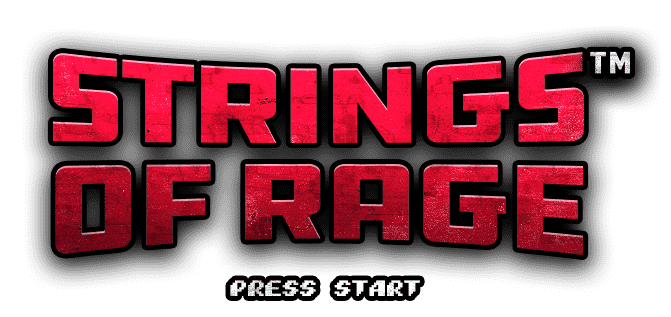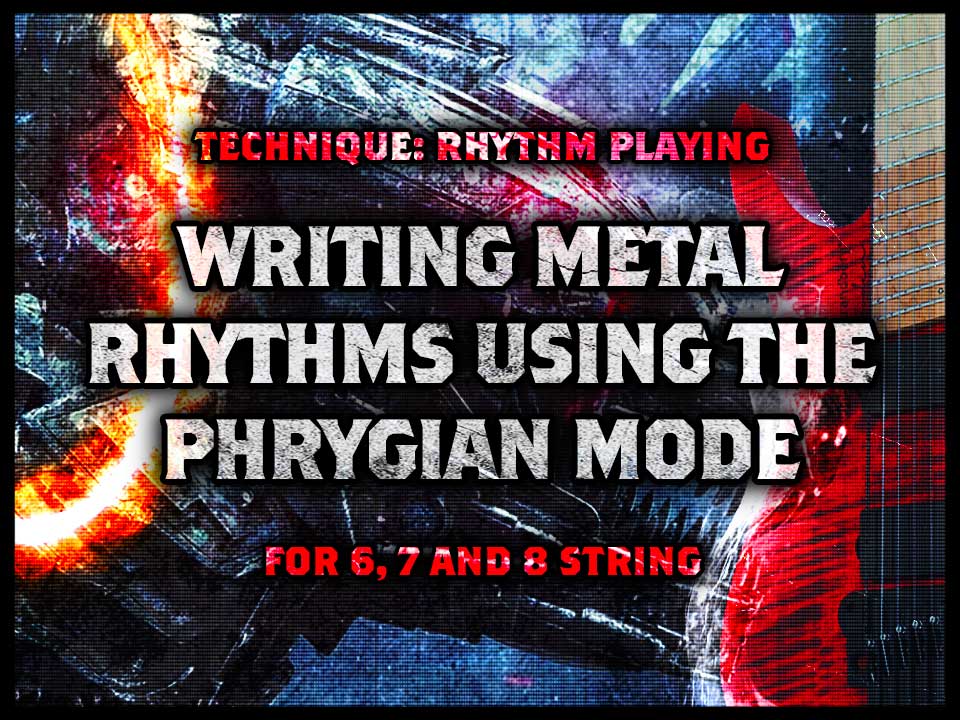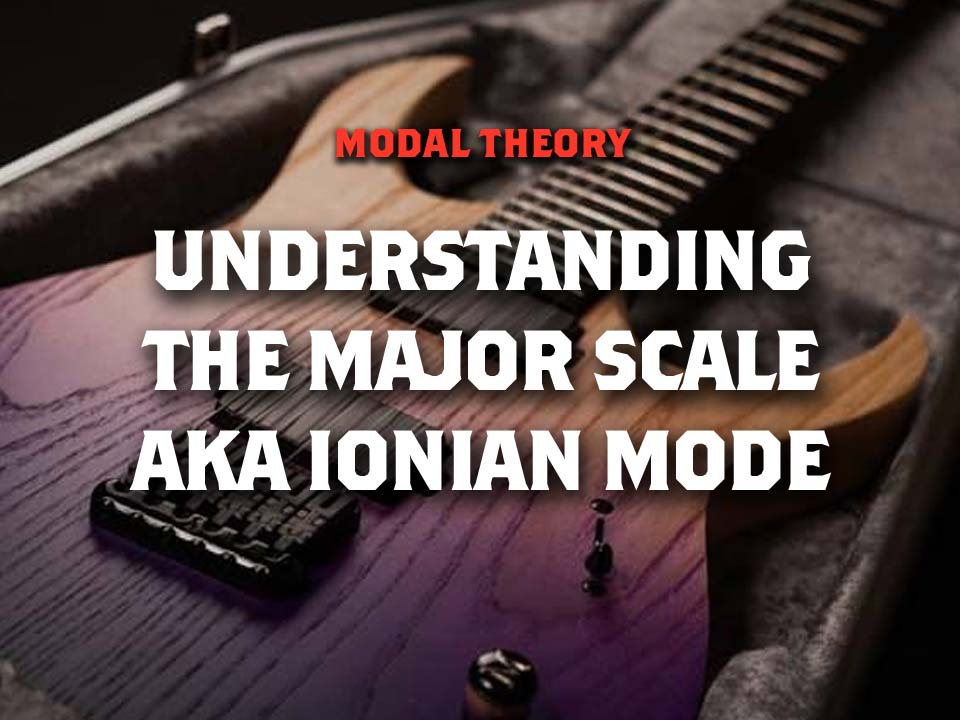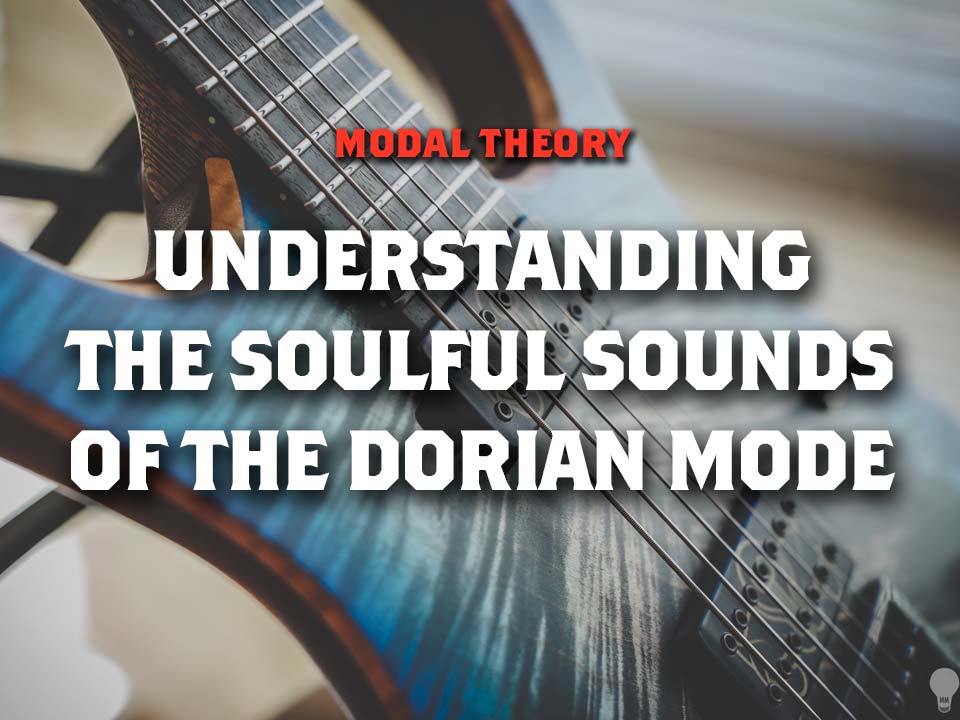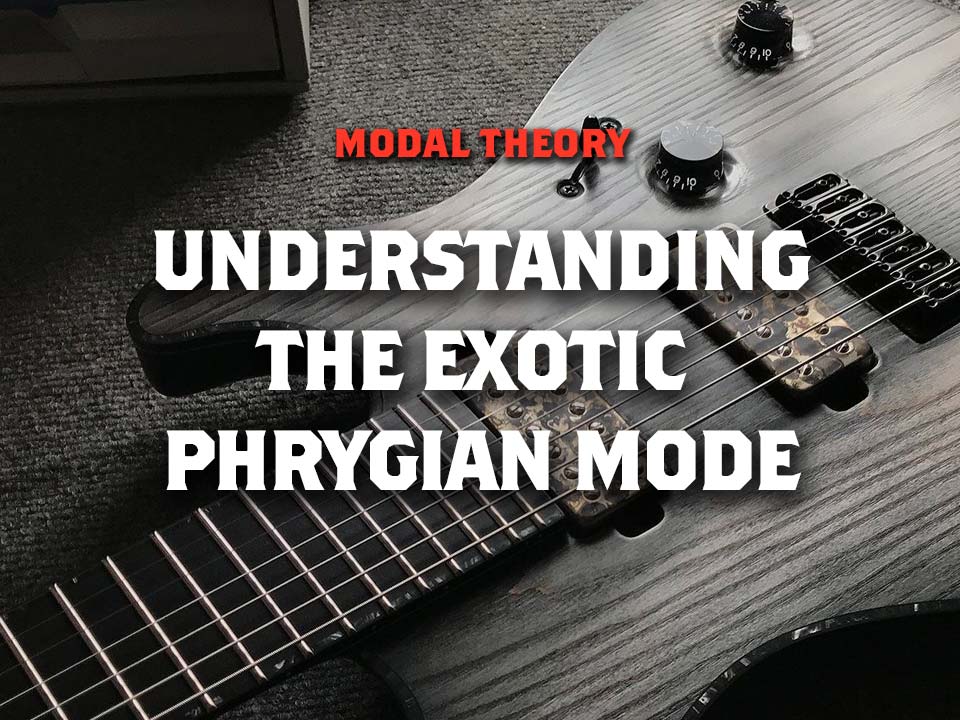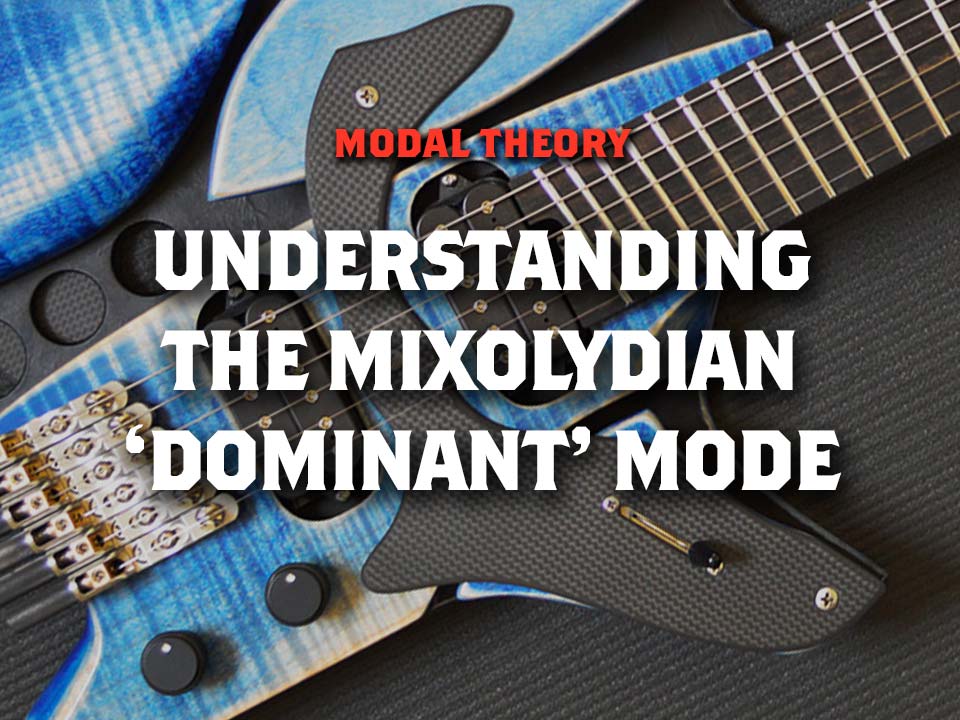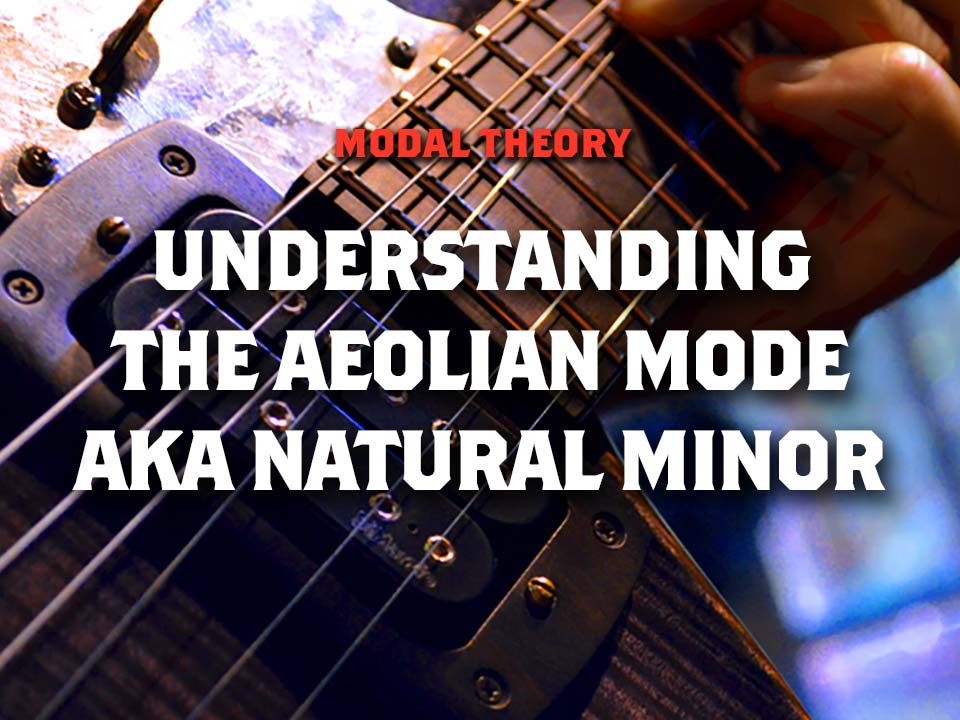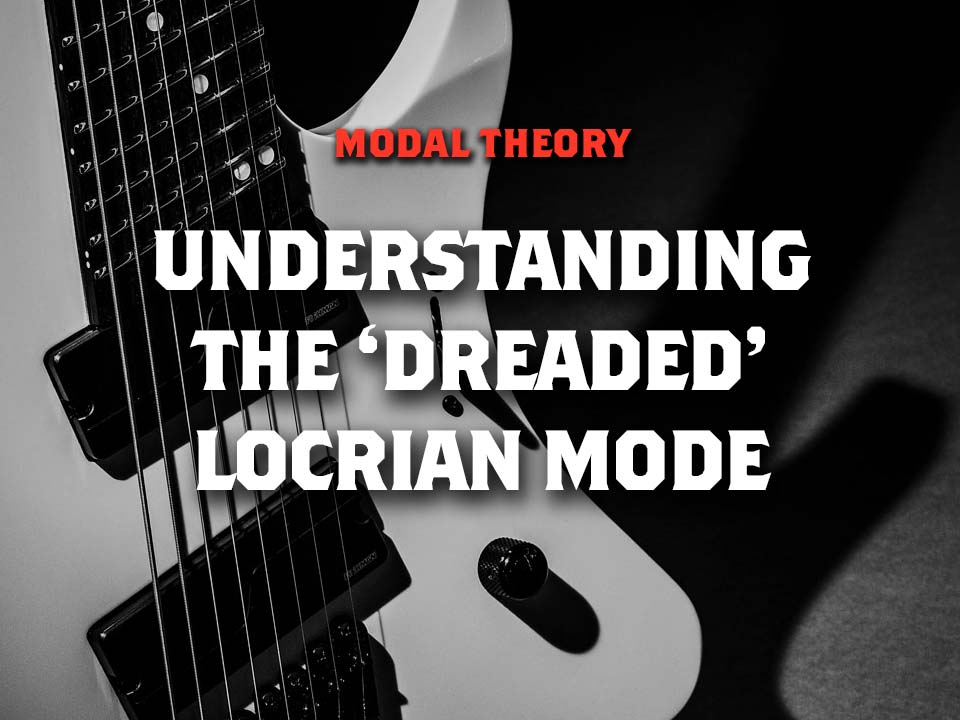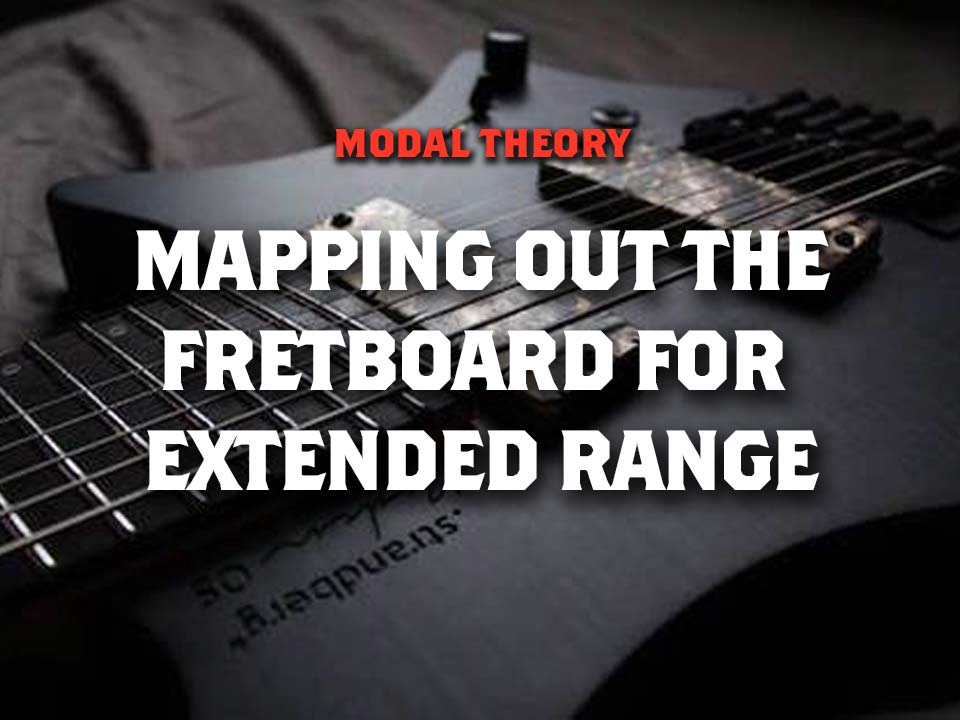In this lesson we’re going to look at how to use the Phrygian mode to create a metal rhythm part. We’ll look at how to play the mode on 6, 7 and 8 string guitars.
Continue ReadingIn this series of lessons we will look at the modes of the Major Scale. We’ll learn how the modes relate to the major scale and look at when and how to use them.
Modes seem to be a source of confusion for a lot of people, especially the ‘self-taught’ guitarists among us. You’ll also often see modes of the major scale listed in books for reference but with little or no explanation of how to use them.
So what are the modes of the major scale?
A mode is basically the major scale, shifted along so that the ‘root’ note is different, for example in C major the second note is D. The second mode of the major scale is ‘Dorian’ so in C major we get the D Dorian mode. The notes of D Dorian are the same as C major except they run from D to C instead of C to B.
Let’s start by looking at the Major Scale itself:
Continue ReadingDorian is the second mode of the major scale so we get it by starting from the second note instead of the first. In the Key of C major the Dorian mode would be D Dorian, the notes would be D-E-F-G-A-B-C-D. The same notes as C major but starting from D instead of C.
The Dorian mode is normally used over a m7 chord, this is because the II chord in a major key is a m7. See our post on building chords from the major scale for more information. So if we have a chord progression which contains a II chord we can use the Dorian mode to solo or write a melody over it. We can also write chord progressions which resolve to Dorians I chord. For example dm7.
Phrygian is the third mode of the major scale and is considered to be a ‘minor’ scale due to the flat 3rd. the interval formula for phrygian is:
H-W-W-W-H-W-W
Since the III chord of the major scale is a m7 chord, phrygian will work well over this. For example in the key of C major the E phrygian mode would work well over Em7. To really bring out the sound of phrygian we need to make good use of the flat 2nd.
Continue ReadingLydian is the 4th mode of the major scale. In the key of C major we get F Lydian. The notes of Lydian are the same as its related major scale, however the lydian mode has an augmented 4th, also referred to as a #11.
Despite the root chord of the mode being a major 7, the lydian mode also has a tense and mysterious quality due to the #11. Since there is a whole-tone between the 3rd and 4th notes we get a semitone between the 4th and 5th.
Continue ReadingMixolydian is the 5th mode of the major scale. In C major we get G Mixolydian, the notes are: G – A – B – C – D – E – F – G. Mixolydian, like Ionian and Lydian is a major type of mode because it has a major 3rd. However it differs from Ionian and Lydian in that it has a minor 7 not a major 7.
This means that we get a Dominant chord, G7 from the mode (Rather than GMaj7), this is made up of a Root, major third, perfect fifth and a minor seventh. Despite being similar to the major scale the mixolydian mode has a lot of mileage for musical endeavours.
Continue ReadingThe sixth mode of the major scale is the Aeolian mode. This is better known as the Natural Minor Scale. In the key of C major we get the A Aeolian mode (A minor).
The A minor scale is often referred to as the ‘relative’ minor to C major. Likewise C major is the ‘relative’ major to A minor. To help understand this mode let’s look at how to write an aeolian mode chord progression.
Continue ReadingThe final mode of the major scale is the Locrian mode. Or as we here at Strings of Rage used to call it “The Dreaded Locrian Mode”.
This is because the Locrian mode tends to be quite dissonant and can be tricky to use. Some books, websites and instructional dvd’s that we’ve come across even omit Locrian entirely! Some have even mentioned it briefly and then moved on!
Continue ReadingIn this lesson we will look at the repeating pattern of the 3nps modes for extended range guitar. This will help you to learn all the modes more easily. We’ll start by using the Mixolydian mode again.
In this lesson on the modes for extended range guitar we’ll look at 7 string guitar (Tuned: B-E-A-D-G-B-E) and two different tunings for 8 string guitar.
Continue Reading